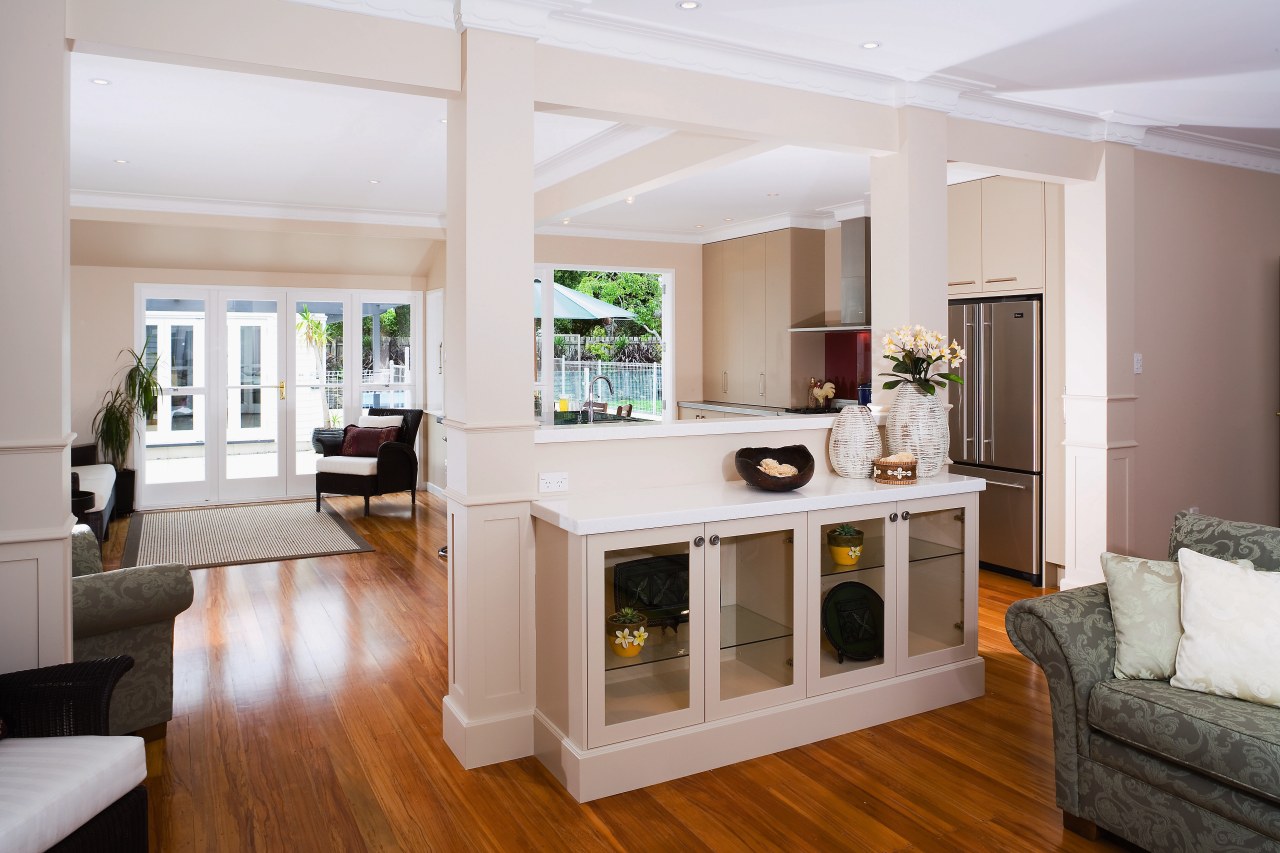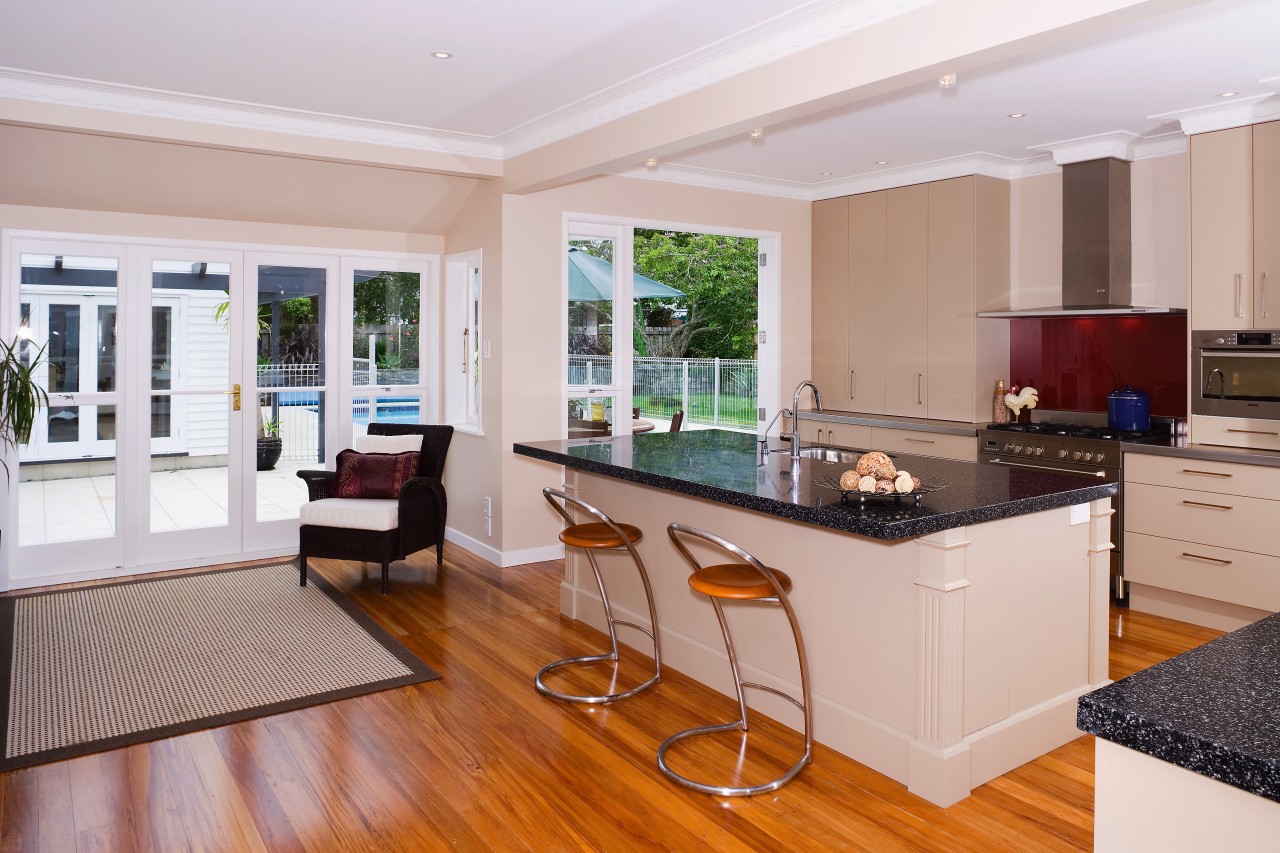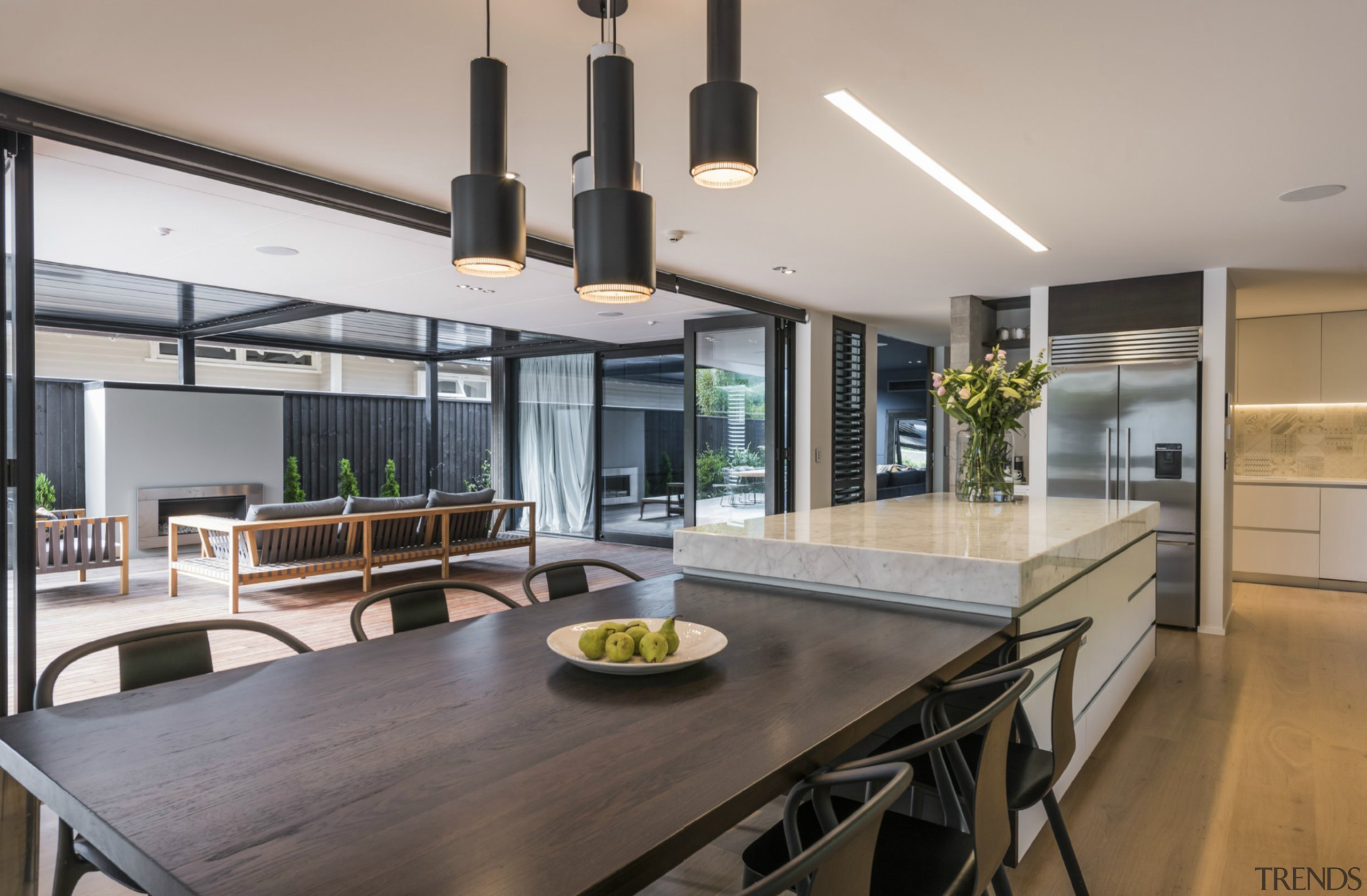Cultural welcome
The renovation of this kitchen space improves connections with adjacent areas and reflects the culture and lifestyle of its owners

Remodelling a kitchen can involve much more than drawing efficient work triangles and specifying state-of-the-art appliances. Sometimes, the essence of what the owner seeks from the project might be at a more fundamental level, even incorporating a sense of culture into the very bones of the renovation.
This kitchen and its adjacent living areas were substantially renovated by kitchen designer Nicola Cumming. What began as a kitchen project quickly grew to encompass a rethink of the greater space and a reflection of the clients' cultural identity. Bringing in architect Bruce Campbell, who drew up the plans, Cumming created a more open living space removing strategic walls, closing off a laundry, inserting French doors adjacent to the kitchen and moving the dining area to a more formal setting at the rear of the space.
"This renovation pays respect to both the original style of this large colonial home and also to the owners' bold, vibrant Tongan culture," says Cumming. "In removing walls to re-orient the space, we introduced substantial panelled pillars and structural beams to support the upper floors. These were appropriate to the home's sense of architectural honesty."

While these vertical beams and cross beams make strong design statements, they sit alongside more delicate features, such as the cornices ringing the ceiling panels. The cornices, and even the fluting on the kitchen island, follow on from similar classic elements found throughout the interior.
"The owners wanted the space to offer hassle-free upkeep. Cabinet doors that extend from ceiling to countertop make cleaning easier, and are one example of this," says Cumming. "However, this was never intended to be a minimalist kitchen, but rather a warm, approachable one. The architectural detailing, such as the fluting, was a way of bringing detail and intricacy back into the design.
"This kitchen also reflects another aspect of Tongan culture," says the designer. "The owners entertain family and friends often, and frequently on a large scale. It would not be unusual for them to cater for twenty-five people."
To this end, the kitchen features two islands and expansive work surfaces. One island provides a separation between the kitchen and dining area, replacing a dividing wall that had original cut off the rear of the space. This island provides storage on the kitchen side, a showcase for Tongan artefacts on the other, and doubles as a serving counter between the two areas.
The other island, at the heart of the kitchen, has an expansive counter surface to cater to larger gatherings. It also provides a seating area for younger members of the family, who can be supervised with their homework. Everything about the space is personalised for the family, Cumming says.
"The colourful artwork, vibrant red splashback and black countertops all provide splashes of colour appropriate to Tongan life," she says." The wall tones, on the other hand, create a demure backdrop, in keeping with interior colours found through the rest of the home."
Story by: Trendsideas
Home kitchen bathroom commercial design









